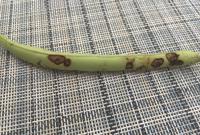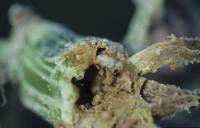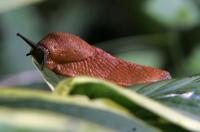Even in colder areas, fig trees can do well if protected
As autumn slowly creeps into winter, you’ll see less and less wildlife activity in your garden. Here are five ways you can attract wildlife to your garden during the cold winter months.
If you’re growing fig trees where temperatures drop below freezing for extended periods, then an ounce of protection can be worth a pound (or more!) of figs.
Native to Mediterranean Europe, Asia and Africa, most mature fig trees can tolerate temperatures down to about 20 degrees. Some varieties, like Celeste and Hardy Chicago, are even more cold-hardy, but even they can succumb to deep freezes. Regardless of the variety, all benefit from some protection.
Depending on the weather and your pruning practices, your fig could grow into a shrub or tree form. Shrubby plants with multiple stems growing from the ground are best wrapped for winter; trees with a single trunk can be either wrapped or buried.
Either way, wait until the trees have dropped most of their leaves, which indicates dormancy (if a few leaves remain, it’s OK to remove them by hand before proceeding).
People are also reading…

A fig tree is wrapped in tar paper and topped with a protective bucket in Pittsburgh.
One popular burial method is “the Minnesota tip.” It involves digging a trench extending out from the base of the tree, about a foot deep, 2 feet wide and as long as the tree is tall.
To prepare the tree, gather its branches and tie them together with soft twine or rope.
Next, plunge a shovel into the soil about 2 feet from the trunk on the side opposite the trench. Lift that side of the root ball out of the ground.
Tip the tree toward the trench until it lies flat in the channel.
Cover the tree with a plastic tarp and tuck it in. This will help prevent damage in spring when you unearth it.
Pack soil around the exposed, lifted side of the roots, fill the trench, and mound at least 1 foot of soil over the tree. You’ll need more soil than you removed from the trench, so be prepared with extra.
If you’re wrapping the tree instead, you will need cardboard, a pail, and a roll each of burlap, heavy brown paper and tar paper.
If it is less than 3 years old, cut the tree back by one-third its size, then pull the branches inward and tie them together with soft but strong rope.
Working upwards from the bottom, wrap burlap around the tree, securing it to itself with pins or staples as you go. Then wrap heavy brown paper around the burlap and tie it into place.
Remove some soil from around the base of the tree, place a large sheet of cardboard into the small ditch you’ve created and bend it around the bottom one-third to one-half of the tree. Tie the cardboard into place.
Don’t give up; you’re almost done. Keep your eye on the juicy figs you’ll enjoy next summer.
Next, wrap tar paper around the tree, angling it outward from top to bottom so that it takes on a pyramidal shape. This will direct rain away from the tree.
Finally, mound soil around the tree’s base and place a pail upside-down over the top of your new garden sculpture to deflect rainwater.
Unwrap the tree on a cloudy day in early spring, just after the last frost.
If your friend or neighbor has gotten away with not protecting their fig tree, you might be tempted to throw caution to the literal wind.
I, too, have heard from several gardeners on the cusp of zones 6 to 7 who report fig-growing success without winter protection, and they are indeed lucky.
Sometimes, a garden’s specific microclimate, sunlight exposure or the tree’s positioning against a protective barrier like a wall can help it survive harsh weather. Although exceptions like those occur, conditions can vary significantly from garden to garden, and even between different areas within the same garden.
Discovering if you are one of the lucky few would require taking an unnecessary risk.
5 common ailments in vegetable gardens and how to treat them
Garden threats

This image provided by University of Maryland Extension shows anthracnose disease symptoms of a bush bean.
You started seeds in spring and watched as they sprouted, then watered, fertilized and even staked plants as they grew, while visions of summer salads, grilled vegetables and homemade pickles danced in your head.
Then one day, black blotches, yellow-spotted leaves and mushy bottoms showed up, and your dreams turned to nightmares.
Many home gardeners lovingly tend their plants only to find them ravaged by unknown forces before harvest time.
But fear not: Here are some tips for identifying and treating five of the most common ailments that threaten your crops.
Anthracnose

This image shows a pumpkin with lesions symptomatic of anthracnose, a serious fungal disease affecting crops like beans, cucumbers, eggplants, melons, peas, peppers, tomatoes, pumpkins and spinach.
A fungal disease that affects beans, cucumbers, eggplants, melons, peas, peppers, tomatoes, pumpkins and spinach. Anthracnose presents as small leaf spots with yellow halos that gradually darken and spread to cover entire leaves. On cucumber plants, foliage may drop, and entire vines may die. Tomatoes and peppers exhibit dark, sunken spots that become more apparent as fruit matures. Pea pods become marred with dark lesions. Round, sunken, yellow spots appear on melons, darkening to brown and then black.
To prevent this, try rotating crops, amending soil with compost before planting and applying mulch afterward. Seek out resistant plant varieties, when available. Avoid overhead watering, which wets foliage and encourages fungal growth. And keep the soil clear of infected plant parts and fallen fruit.
Treat infected plants with a fungicide containing chlorothalonil or copper, carefully following the instructions and safety precautions on the package.
Blossom end rot
Caused by a calcium deficiency that mainly affects tomatoes, eggplant and peppers. Characterized by dark, mushy spots on fruit bottoms, the disorder typically results from inconsistent watering, improper soil pH, injured roots or excess nitrogen.
Prevention measures include testing the soil’s pH before planting. If results are lower than 6.3, incorporate dolomitic lime into beds according to label directions.
Avoid damaging the roots by installing stakes and cages around tomatoes at planting time, instead of when plants — and roots — are larger. And don’t plant a vegetable garden in or near a lawn that receives fertilizer, which can raise the nitrogen level of the surrounding soil.
Treat affected plants by drenching leaves with a calcium spray until the product drips off. Fruit produced after treatment is usually symptom-free, although sometimes a second application is necessary.
Squash vine borer

This image shows a squash vine borer larva and its telltale “frass” excrement inside a hollow squash stem.
Zucchini, squash, cucumber and muskmelon plants die quickly after blooming, without so much as a goodbye. But if you look closely, you’ll see the small puncture holes in the bottoms of stalks and stems caused by these pests, which start life as moths that lay eggs at the base of plants. Inch-long white caterpillars follow and bore into stalks, killing plants as they chew their way around and out. And just when you think the damage is done, they cocoon in the soil until the following year, armed and ready to repeat the carnage.
Prevent damage by monitoring susceptible plants closely. Watch for red, flat, oval eggs early in the season and pick them off by hand. Keep hunting every week.
And if you find signs of damage like punctures and frass, their sawdust-like excrement, use a razor blade to slice affected stems open near the holes and manually pick out the borers. Cover the slits with mounded soil to encourage new root growth.
If necessary, treat plants with Bacillus thuringiensis, or Bt, a bacterial insecticide (several versions are available; seek the one labeled as a control against squash vine borer).
Wilt diseases
Verticillium and fusarium wilt are soil-borne fungal diseases caused by different pathogens that result in similar symptoms.
Primarily affecting eggplants, peppers, potatoes, pumpkins and tomatoes, the diseases ravage roots, resulting in curled, yellow and wilted foliage, brown xylem tissue inside stems and overall stunting. Eventually, entire plants wilt and die.
This is one instance where a good offense is the only defense: Avoid infection by planting resistant varieties (check plant tags for V, F, VF or VFN, resistance indicators for verticillium wilt, fusarium wilt and nematodes). Rotate crops by keeping infected beds free of susceptible plant species for three or four years, essentially starving the disease of a host to clear the pathogen from the soil. And regularly clean up fallen leaves, fruit and plant debris.
Slugs

A slug nibbles at the leaf of a hosta in a garden in this 2007 file photo.
Jagged holes, typically in leaf centers rather than edges, indicate slug damage. The nocturnal gastropods feast on basil, cabbage, cucumbers, lettuce, tomatoes, peppers, and ornamental plants like hostas, leaving a telltale slimy trail behind.
Get ahead of the slithering miscreants with a spring cleanup that clears leaves, plant debris and slug eggs from the soil surface, and keep mulch no deeper than 3 inches to avoid creating a haven.
Sink a small can or jar into the soil around affected plants, leaving about an inch exposed above ground, then fill it halfway with beer. Slugs will crawl in for a drink and drown. Alternately, if you aren’t squeamish, you might go into the garden at feeding time (overnight) and sprinkle a bit of salt on each of your little visitors. As their bodies attempt to dilute the irritant, slugs will dehydrate and die. But don’t be tempted to sprinkle salt around plants. Doing so would risk damaging the soil.
For all the latest Life Style News Click Here
For the latest news and updates, follow us on Google News.
